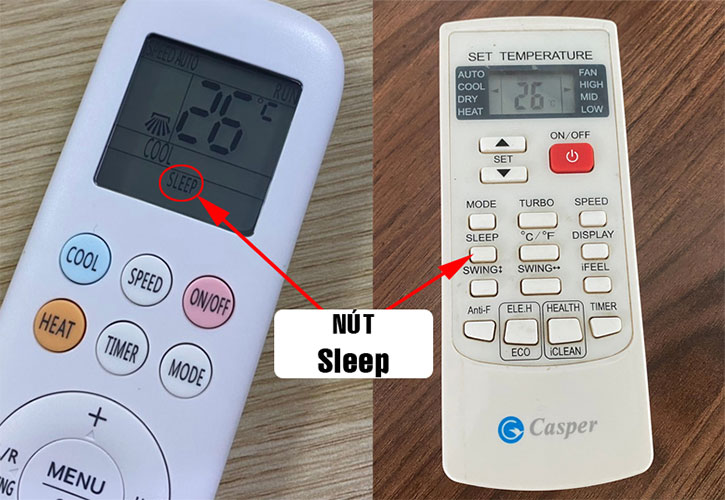1 – Why You Should Hit the Sleep Button on Your AC Remote
Air conditioning becomes essential when outdoor temperatures soar. However, improper use of ACs can impact your health and the appliance’s longevity.
When using an AC remote control, we often focus on the main buttons such as Power, temperature adjustment, and fan speed settings. The Sleep button is often overlooked.

Sleep Button
The Sleep button is essential as it activates the Sleep mode, aiming to balance the room temperature with your body temperature. This promotes a comfortable sleeping environment, enhances work efficiency, saves energy, and protects the health of both the user and the air conditioner, ensuring a peaceful and safe sleep.
Specifically, when Sleep mode is activated, the room temperature automatically adjusts over time to match the ambient temperature, preventing you from catching a cold.

Typically, after 30 minutes to an hour of activating Sleep mode, the temperature will increase by one degree, then by another degree after two hours, maintaining this temperature for the rest of the night.
For instance, if you set the temperature to 25°C before bedtime, after 30 minutes to an hour, the AC will increase it to 26°C. Then, after approximately two hours, the temperature will rise to 28°C, matching the outdoor temperature.
This temperature range is safe and promotes a good night’s sleep, especially for children. Additionally, setting the Sleep mode to an appropriate temperature will reduce your electricity bill.
2 – How to Use Your AC Efficiently and Save Electricity
Frequent On and Off Cycles Waste the Most Energy
Turning your AC on and off is the easiest way to waste electricity, and it can also damage the compressor. The correct way is to set a lower temperature to quickly cool the room. Once the desired temperature is reached, adjust the temperature higher and reduce the fan speed.
Utilize the Timer Function
You don’t need to keep your AC running all night. Typically, running it for the first 2-3 hours of sleep is sufficient, after which you can switch to a fan. If you’re still concerned about the heat, you can also use Sleep mode overnight, which can save up to 20% of electricity.
Keep the Door Open When First Turning on the AC
The air in a closed room with an AC can be 2-5 times more harmful than outdoor air, affecting your health. Staying in a closed room for too long can cause a feeling of suffocation and difficulty breathing. The correct way to use an AC is to keep the door open for the first 10 minutes of operation, allowing the initial blast of cool air to escape and fresh air to circulate.
Additionally, ensure you ventilate the room at least three times a day—morning, afternoon, and evening—when using the AC.
Place a Bucket of Water in the Room
The AC can dry out the air, causing dryness in the mouth, nose, and eyes. Placing a bucket of water in the room can help alleviate these symptoms.

Using AC Efficiently
Introduce Houseplants
If your AC room has windows that are often closed, consider placing oxygen-rich houseplants such as bromeliads, asparagus ferns, and spider plants. These plants not only release large amounts of oxygen but also help purify the air, making the room fresher and cooler.
Avoid Using AC When Sleeping on a Mat
For individuals with joint pain, shoulder pain, or digestive issues, sleeping on a mat in an air-conditioned room can aggravate these conditions. It is best to avoid using the AC when sleeping on a mat or consider switching to a bed with a mattress.






































